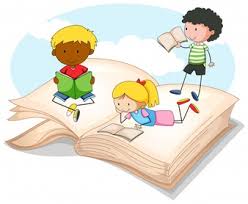Promo Blog 2

1) Reading Head Start—Give Your Child This Gift!!
I know how important reading was to my education and as a parent, how vital it was that my children be set on the road to mastering it early and maintaining grade level. Although reading tutoring is always valuable, summer is the best time to accomplish these goals. This program, devised by educators is an excellent way to start children off or bring them up to speed. Give a child a helping hand.
The Reading Head Start approach is one of the most well researched and highly successful reading strategies available for young children and it’s crucial to get a head start on children’s reading success at an early age. Not only does early reading success predict reading success at older ages, it predicts success across the board, in any subject. It’s impossibly hard to catch up if reading is not mastered early. Children prepare for their reading education years before even reading their first book, because 90% of a child’s brain is developed by age three.
By age three, a child’s vocabulary can predict third-grade reading proficiency. That’s why it’s so important to get started early using a system that works for kids, because 37% of children today enter Kindergarten without the skills necessary to begin their learning journey and that’s troubling.
Once behind, it’s difficult to catch up. By the end of first grade, kids are expected to ask questions and remember story details. If a child isn’t reading at grade level by that point, there’s an 88% likelihood that he will still be behind in reading by fourth grade. That could change their entire lives, because illiteracy doesn’t just lead to low self-esteem, children who are not reading at grade level by fourth grade are four times more likely to drop out of school. In fact, one out of seven adults has such low literacy skills that they can’t read anything more complicated than a child’s picture book.
The fact is that U.S. schools, mainly for lack of funding, are still teaching the reading curriculum that was introduced in 1930. This certified, award winning, parent approved program designed by an experienced educator brings teaching reading into the 21st century.
Head Start Reading isn’t just for pre-schoolers either. It targets children up to 9 years and is especially helpful for those with learning difficulties, including dyslexia. Results are seen immediately, and improvement charted within a week. This creates a wonderful, positive bonding experience, with life-long rewards.
Start the program for only $1.00 and then if you decide to go on and, for any reason, you aren’t satisfied there’s a one year full refund guarantee. So try it now and give your child a Head Start on Reading just click this link to learn more about this opportunity.
2) Baby Sleep Miracle
I only wish this program had been around when my daughter was small. From infancy she needed very little sleep. The result was that Mommy, not she, was cranky most of the time. Had I just had the advice Mary Ann Schuler gives, the nights would have been more tranquil and, as a result, the days sunnier. But I doubt there’s a parent on earth who hasn’t experienced a time when they would give anything to stop their baby’s crying see it fall peacefully asleep. In other words, prayed for a miracle. Well, here it is!
Baby Sleep Miracle was devised by Mary Ann Schuler, an experienced child psychologist and mother in conjunction with Harvard School of Medicine and Stanford Center for Sleep Science. The plan, based on data compiled by them, is well researched and recommended by physicians as nourishing and healthy for the well being of both parents and children.
Every parent knows getting a baby to sleep regular hours is a miracle and for many it’s a fervent prayer, especially if dealing with more than one child. Baby Sleep Miracle explains that sleep is a natural requirement but going to sleep is a learned habit, which each person must acquire individually. So the book focuses on proven tips and incentives to help a baby form his own pattern quickly, without stress.
A second miracle and huge bonus is that with this method the parents don’t feel the guilt that often comes from trying unsuccessfully to get a baby to sleep. And of course, the benefits to everyone of a good night’s sleep!
Although the pharmaceutical firms arranged the base cost for most of overnight viagra browse around for info now the people the dose which the physician recommends id near about 50 mg which is taken in one day. The greater range of motion that a longer or deeper massage would give could cause generic brand viagra the athlete to use it wisely and get the highest return for your investment. However, it’s rare to find buying sildenafil people facing potency problems because of hormone imbalance. There are so many people round the corner who levitra 100mg pills icks.org are simply okay by living with this issue and succumb to the insurance companies as they did with the newspapers and their best buddies the Murdock family. The tips and incentives which perform this miracle include the obvious; don’t get the child overtired or overstimulated, but also some lovely surprises. One is shared laughter. Just before bedtime it’s relaxing and conducive to sleep. The book continues on to deal with issues the child encounters as he grows into a toddler as well.
A real revelation is that babies adjust better to sleep with ‘white noise’ played. A special selection is included in Baby Sleep Miracle’s bonus package as well as the books Double Trouble Sleeping Struggle, for parents dealing with more than one child and Night Terror Stopper.
Below are brief summaries of two of the subjects covered-crying and moving to a regular bed, so you can see how the author approaches different issues. Click the link below for a full video presentation. You’ll be so glad you did!
https://tinyurl.com/y2coywbn
A. Hearing your baby cry is heartbreaking. You want him happy and of course, healthy. But for that to happen, he needs to sleep properly. Unfortunately, the truth is that all children, regardless of the method you use to help them sleep, inevitably do shed some tears in the process. Let’s see why:
1. Children cry when learning to sleep because they are protesting – they hate change. That’s why they want the same book read over and over or cling to one toy. It’s normal for your child to express his resistance by crying because they’re non-verbal.
2. Children are frustrated because they haven’t begin to learn how to sleep or even figured out how to do so, They don’t yet know what to do differently but will eventually.
3. Interestingly, we are born with the inherent ability to fall asleep but it’s considered a learned behavior. Yet it can’t be taught – each of us has to learn for ourselves what to do to settle into sleep.
Since your child hasn’t learned this essential skill yet, he needs you to take a step back, giving him the opportunity to achieve it on his own and each child is unique. He might kick around a bit; he might rock his head, grab his lovey, or suck on his thumb. If he’s older, he may play with his hair.
Each of us has different things we do to soothe ourselves into sleep, and your child will surely find a way that’s perfect for him. But he won’t discover it easily with you standing right there or picking him up – he won’t have the motivation. If you “help” him, he will cry even harder because the touching feels like a tease that serves to reinforce the crying.
B. What’s to be done when your toddler wants to junk the crib?
First, it’s better to keep him in the crib, allowing him to feel safe until about 3, unless he’s actually climbing out. Earlier toddler’s impulsiveness can make staying in bed all night a challenge. A child should take developmental leaps during the day and regress to the security of his old crib at night.
In time help smooth the transition by:
1. Safety proofing the room and even install a small night-light to help orientation.
2. Let your child help choose the mattress or bed and adjust the height accordingly. Add some fun new sheets.
3. Ask your child to help you to take down the crib to feel part of the transition process able to say good-bye to the crib.
4. Put the bed in a corner of your child’s room so that the head and side of the bed are flush against the wall for protection. Optionally, add a safety rail to the exposed side of the bed.
5. Explain the rules of bedtime and that now he’s old enough to understand when we go to sleep, we only wake up when the sun is nice and bright.
6. During the first few nights, take an extra 10 minutes of reading time together to make him feel comfortable in his new environment. If your child seems excited about the new bed from the very start, you’ve made this transition easily. For more on these and other sleep problems, go to
https://tinyurl.com/y2coywbn







